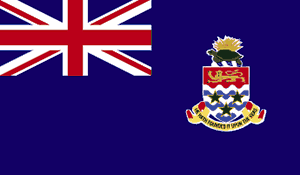|
The Cayman Islands’ economy is primarily driven by the financial services industry, tourism and the legal and accounting industries. The financial services industry generated approximately 50% of the Cayman Islands’ GDP in 2006 and 2007 and provided approximately 36.1%, 37.6% and 39.8% of our revenues through annual fees relating to
licenses and work permits in 2006, 2007 and 2008, respectively. For the three-month period ended September 30, 2009, the financial services industry provided US$26.0 million or 24.9% of our revenues. The first fiscal quarter results reflect the effect of seasonality since we derive the majority of revenues in the second quarter of the fiscal year and also the effects of the global financial crisis. As of March 31, 2009, the Cayman Islands was the world’s sixth largest banking center in terms of assets and the world’s fourth largest banking center in terms of liabilities, according to the Bank for International Settlements. As of August 31,2009, the Cayman Islands was also the world’s second largest offshore insurance center and a leader in the offshore mutual funds industry, according to the AMB Country Risk Report. The financial services industry also stimulates other areas of the Cayman Islands’ economy, particularly its legal and accounting industries. We are focused on further enhancing the integrity of the Cayman Islands’ financial sector through domestic regulation and international regulatory cooperation.
The Cayman Islands public sector debt consists of U.S. dollar-denominated debt and a small amount of Euro-denominated debt. The Legislative Assembly must appropriate any incurrence of liabilities. The 2009
Constitution, which came into effect on November 6, 2009, limits Government borrowing to 10% of Government revenue, as determined by a United Kingdom Secretary of State. The Legislative Assembly may provide for a higher percentage for urgent or extremely important matters.
Total debt increased from US$208.5 million as of June 30, 2006, to US$505.5 million as of June 30,2009, and US$570.3 million as of October 31, 2009. This change amounted to an increase of debt as a percentage of nominal GDP from 7.3% in fiscal year 2005/2006 to 16.5% in fiscal year 2008/2009 and 18.6%
for the four-month period ended October 31, 2009, on an annualized basis. Government estimates that this borrowing balance will total approximately US$599.7 million as of June 30, 2010. Debt service ratio (ratio of interest expense to GDP) was 3.9%, 3.3% and 5.3% in fiscal year 2006/2007, 2007/2008 and 2008/2009,respectively.
|




